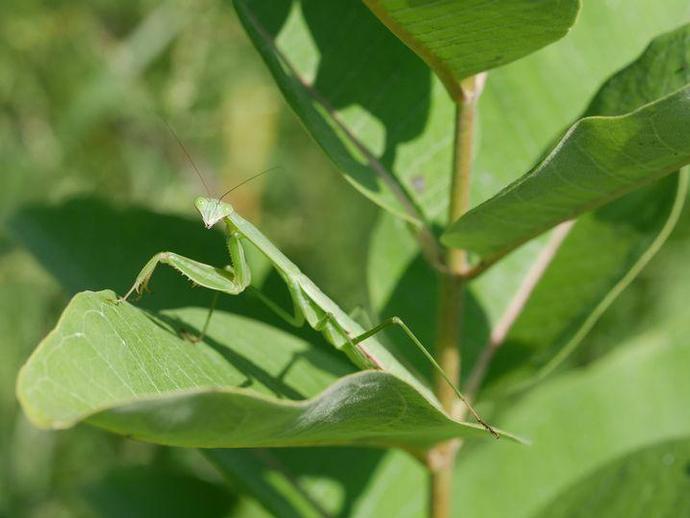November 21, 2021
We're reaching into the archives for today's #BenInNature update presented by our friends at Carter Bank & Trust! The following post was originally published on August 30, 2020.
The Chinese mantis (Tenodera sinensis) is the largest mantis in North America, and they can be either brown or green in color. As the name suggests, these mantises are not native to the U.S.; their native range includes China, Japan, the Koreas, Micronesia, and Thailand.
These critters were first introduced into the U.S. in the late 1800s when they were accidentally released at a plant nursery near Philadelphia. Since then, their spread has continued unabated and many nurseries still sell Chinese mantis egg cases (or "ootheca") for people to place in their gardens. While these mantises are quite skilled at eating garden pests, they're also skilled at eating pretty much anything — including our native mantis species, the Carolina mantis (Stagmomantis carolina). They can also outcompete our native mantises for food.
Unfortunately, these mantises will also kill and eat small reptiles and amphibians, and on rare occasions, they will even take down hummingbirds! Invasive though they may be, they are definitely impressive predators.
Thank you to VMNH Associate Curator of Recent Invertebrates Dr. Kal Ivanov for the identification!
ABOUT #BenInNature
Social distancing can be difficult, but it presents a great opportunity to become reacquainted with nature. In this series of posts, Administrator of Science Ben Williams ventures outdoors to record a snapshot of the unique sights that can be found in the natural world. New updates are posted Monday - Friday, with previous posts highlighted on the weekends. This series of posts is made possible thanks to the support of VMNH Corporate Partner Carter Bank & Trust (www.cbtcares.com).
NATURE PHOTO IDENTIFICATIONS
If you discover something in nature that you would like help identifying, be sure to message us right here on Facebook with a picture (please include location and date of picture) and we'll have our experts help you identify it!

 Hours & Admissions
Hours & Admissions Directions
Directions

